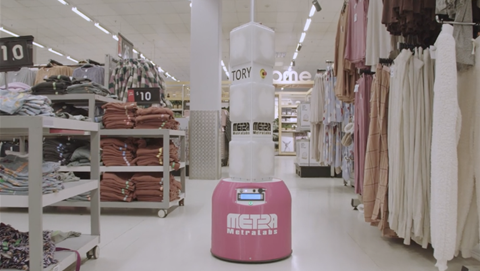The physical presence of government in NSW has become a natural casualty as the state works towards processing 70 percent of transactions through digital channels by 2019.

But for some essential functions of government such as those provided by the Department of Justice - which has an extensive network of courts, prisons and juvenile justice centres - removing on-the-ground services is not immediately an option.
“We as a business and a cluster are still very much stuck in an analogue world,” chief information officer Aaron Liu told a recent AIIA briefing in Sydney.
“A lot of the services we provide are bricks and mortar, especially those within the core courts and justice system itself.”
Much of this stems from the cluster's grounding in the legal tradition, he said, and the department is only now starting on a long journey into the digital world.
The justice cluster is comprised of 80 individual business units across the NSW Police Force, Fire and Rescue NSW, SES, Rural Fire Services, and Courts and Tribunals, as well as agencies that play administrative roles within the justice system like Births Death and Marriages, and the Crown Solicitors Office.
This diverse composition has resulted in “a very complex service delivery environment”, according to Liu, with a 36,000-strong workforce ranging from judges to frontline police and emergency services workers, as well as close to a further 100,000 volunteers.
But the department is now looking to remove this complexity using the $150 million that it spends on ICT each year.
“Digital enables diverse bricks and mortar networks to be connected in new and different ways, to make service much more seamless and integrated for our citizens, offenders and people in that context,” Liu said.
“So the challenge for us is to start to unwind the complexity of that business environment, distil it to some common elements, and then start shifting those from analogue to digital by default solutions and systems.”
The cluster has had some early success in digitising aspects of the courtroom through initiatives like the online registry and online court – a chatroom “where simple matters can be adjudicated and documents shared without anyone ever needing to leave their home potentially in resulting disputes”, Liu said.
Birth registrations are now also moving to a digital channel and will be integrated within the broader Service NSW operations.
In the case of the cluster's largest operational agency, NSW Police, the adoption of new technology is envisaged to go beyond augmenting bricks and mortar to the point where frontline officers are able to unshackle themselves from local area commands altogether.
NSW Police’s general manager of policing systems Ben Shaw said allowing frontline police to plug into "backend corporate systems and operational systems" using mobile devices would enable the force to "rechannel a lot of the funds that are going into our property costs and operational policing" and adopt a more centralised model of policing.
“So a way to do that is have in some cases what could be regarded as an American model ... where the police officers leave in the morning from what we call a superstation, and they can do their whole activity with their partner in the car for the whole shift,” Shaw told the AIIA briefing.
“No need to come back to a police station, no need to have bricks and mortar and the huge expenses that comes with that.”
Emerging tech
Futher afield, the Justice department is looking at emerging technologies like AI and blockchain to help it be more efficient and effective on the inside.
Liu said the department is already using “fairly mature” applications of AI, particularly in the police space, including for investigations, pattern recognition, and facial recognition, but he said he wants to see this grow in places like online assistance.
“Online chatbots that support enquires around simple transactions is also an area that we’re exploring using AI," Liu said.
The department is also taking prompts from the government's whole-of-government digital transformation strategy, which details targets for customer experience, data, and digital culture.
This includes making sure the department is “as efficient as possible behind the shiny wall of a Service NSW shop or a website” and that behind the scenes the cluster is "as efficient, as automated, and as streamlined as possible”, Liu said.


_(22).jpg&h=140&w=231&c=1&s=0)


.png&h=140&w=231&c=1&s=0)



_(26).jpg&w=100&c=1&s=0)

 iTnews Executive Retreat - Security Leaders Edition
iTnews Executive Retreat - Security Leaders Edition












_(1).jpg&h=140&w=231&c=1&s=0)



